Strategies to Deal with Angry Customers in 2025
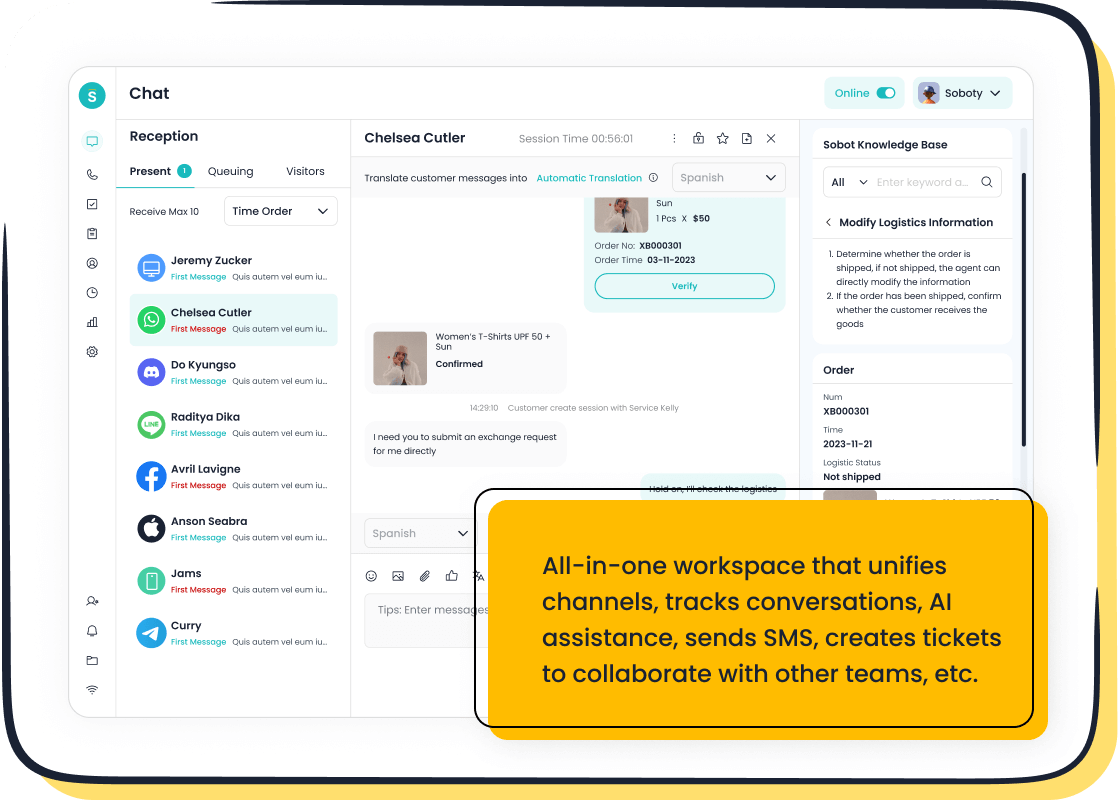
Dealing with angry customers has never been more crucial than in 2025. Today’s consumers have higher expectations than ever, with 86% of them ready to abandon a brand after two poor experiences. That’s why mastering how to handle irate customers can make or break your business. A single bad interaction can lead to lost loyalty, but a great recovery can turn frustration into trust—88% of customers are likely to re-purchase after receiving excellent customer service.
Modern tools like Sobot Live Chat play a pivotal role in this transformation. By enabling instant, personalized communication, Sobot helps businesses meet evolving customer expectations. Its AI-powered features allow you to respond quickly, keep conversations organized, and even predict customer needs. With tools like this, you can turn moments of dissatisfaction into opportunities for stronger relationships and lasting growth.
Understanding Why Customers Get Angry
Common Triggers of Customer Frustration
You’ve probably noticed that some customer frustrations seem to pop up again and again. These triggers often boil down to a few key issues. Long wait times, unhelpful responses, or even feeling ignored can quickly turn a calm customer into an angry one. Did you know businesses lose $75 billion annually due to poor customer service? That’s a staggering number, and it highlights how critical it is to address these frustrations.
Here’s the thing: customers don’t always voice their complaints. In fact, only 1 in 25 unhappy customers will tell you what went wrong. The rest? They might just leave without a word. And when they do share their frustrations, 13% will tell 15 or more people about their bad experience. This ripple effect can damage your brand’s reputation faster than you think. To avoid this, it’s essential to understand the types of angry customers you’re dealing with and tackle their concerns head-on.
The Role of Miscommunication in Escalating Issues
Miscommunication is like adding fuel to the fire when it comes to customer issues. Imagine this: a customer reaches out for help, but the response they get is unclear or doesn’t address their problem. Frustration builds, and before you know it, the situation escalates. That’s why keeping communication clear and consistent is so important.
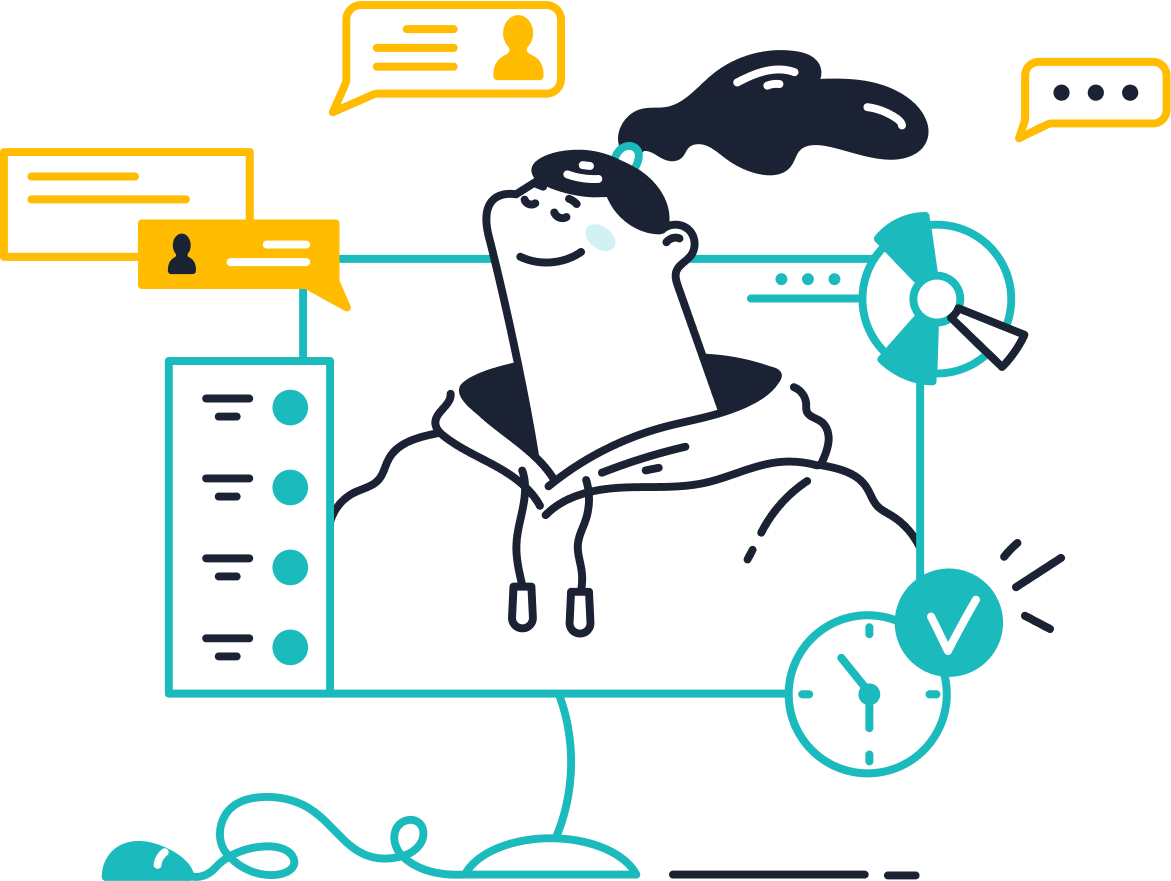
One way to prevent miscommunication is by providing regular updates. When customers know what’s happening with their issue, they feel valued and less likely to get upset. Tools like Sobot Live Chat can help here by keeping all conversations in one place, ensuring nothing gets lost in translation. Plus, with features like AI-assisted responses, you can deliver accurate information quickly, reducing the chances of misunderstandings.
The Impact of High Expectations in 2025
In 2025, customer expectations are higher than ever. People want fast, personalized, and seamless service across all channels. If you fail to meet these expectations, frustration can set in quickly. For example, 32% of customers would stop doing business with a brand they love after just one bad experience. That’s why it’s crucial to stay ahead of their needs.
Using predictive tools like Sobot AI can make a big difference. By analyzing customer behavior, you can anticipate their needs and offer solutions before they even ask. This proactive approach not only prevents issues but also shows customers that you truly care about their experience.
Key Principles to Calm an Upset Customer
Practicing Empathy and Active Listening
When a customer is upset, the first thing you should do is listen—really listen. Active listening isn’t just about hearing words; it’s about understanding emotions and intentions. Pay attention to their tone, choice of words, and even pauses. This shows them you care. For example, if a customer feels ignored, responding with phrases like, “I understand how frustrating this must be for you,” can make a huge difference.
Empathy is your secret weapon here. Imagine yourself in their shoes. Wouldn’t you want someone to acknowledge your feelings? By practicing empathy, you can calm an upset customer and turn the conversation around. Tools like Sobot Live Chat make this easier by keeping all customer interactions in one place. This helps you focus on the customer’s concerns without losing track of the conversation.
Staying Calm and Professional Under Pressure
Upset customers can test your patience, but staying calm is non-negotiable. When emotions run high, your ability to remain calm can de-escalate the situation. Take a deep breath and focus on the solution rather than the problem. Using positive language like, “Let’s figure this out together,” can shift the tone of the conversation.
Professionalism matters too. Customers respect a customer service representative who handles difficult customers with grace. Emotional intelligence plays a big role here. It helps you manage your own emotions while guiding the customer toward a resolution. For instance, if a customer lashes out, respond with a respectful tone and avoid taking their words personally. This approach not only resolves the issue but also leaves a lasting impression.
Acknowledging and Validating Customer Concerns
Sometimes, all a customer wants is for someone to say, “You’re right, and we’re sorry.” Acknowledging their frustration validates their feelings and shows you’re taking their concerns seriously. Start by actively listening, then empathize with their situation. For example, if there’s a misunderstanding about a promotion, say, “I see how this could be confusing. Let me clarify it for you.”
Validation builds trust. It tells the customer you’re on their side. Once you’ve acknowledged their concerns, offer a solution that meets their needs. Sobot’s AI tools can help you personalize responses and find actionable solutions quickly. Whether it’s offering a discount or explaining the next steps, showing a willingness to resolve the issue can turn a stressful interaction into a positive experience.
Step-by-Step Strategies to Handle Angry Customers
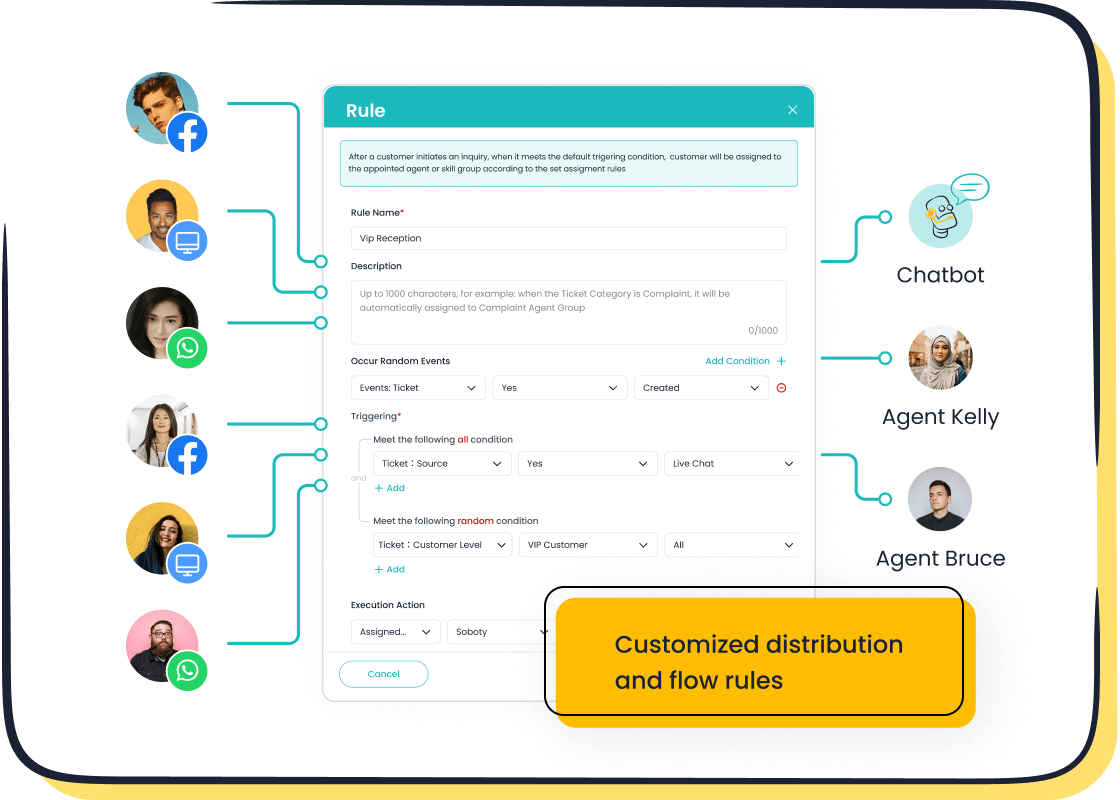
De-escalation Techniques for Tense Situations
When emotions run high, knowing how to deescalate an argument is critical. Angry customers often feel unheard or misunderstood, and your ability to calm the situation can make all the difference. Start by maintaining a calm presence. Your tone and body language should signal that you're here to help, not to argue.
Here’s a simple approach:
- Acknowledge their frustration: Use phrases like, “I understand this is upsetting for you.”
- Ask clarifying questions: This shows you’re actively listening and helps pinpoint the issue.
- Avoid defensive language: Instead of saying, “That’s not our fault,” try, “Let’s figure out how we can fix this.”
- Use humor carefully: A light joke can ease tension, but only if the customer seems receptive.
- Know when to disengage: If a customer becomes abusive, set boundaries politely but firmly.
A 2024 Khoros survey found that 83% of customers develop stronger loyalty toward companies that effectively respond to complaints. By following these steps, you can turn tense moments into opportunities for trust-building. Tools like Sobot Live Chat can assist by keeping conversations organized and providing AI-powered suggestions for calming responses.
Personalizing Communication with Tools like Sobot Live Chat
Personalized interaction is the cornerstone of excellent customer service. Customers want to feel valued, not like just another ticket in the queue. With tools like Sobot Live Chat, you can tailor your responses based on customer history, preferences, and behavior.

For example, imagine a customer frustrated about a delayed order. Instead of a generic apology, you could say, “I see your order was delayed due to shipping issues. Let me expedite it for you and offer a discount for the inconvenience.” This level of personalization builds trust and shows you care.
Here’s how Sobot Live Chat makes personalization easy:
- Unified workspace: All customer data is in one place, so you can respond quickly and accurately.
- AI-assisted tools: These suggest tailored responses based on customer profiles.
- Omnichannel support: Whether the customer reaches out via WhatsApp, Instagram, or your website, you can maintain consistent communication.
The results speak for themselves:
| Statistic/Case Example | Result |
|------------------------|--------|
| Reduction in inbound discussion volume | 20% |
| Increase in positive feedback | 96%+ |
| Correct answers provided by AI platform | 80%+ |
| Customer satisfaction rate | 95%+ |
| Self-service question answering rate | 22.2% |
| Customer satisfaction score (CSAT) | 97% |
| Increase in sign-off rate | 35% |
| Increase in COD collection rate | 40% |
| Problem resolution rate | 85% |
| Customer happiness rate | 99% |
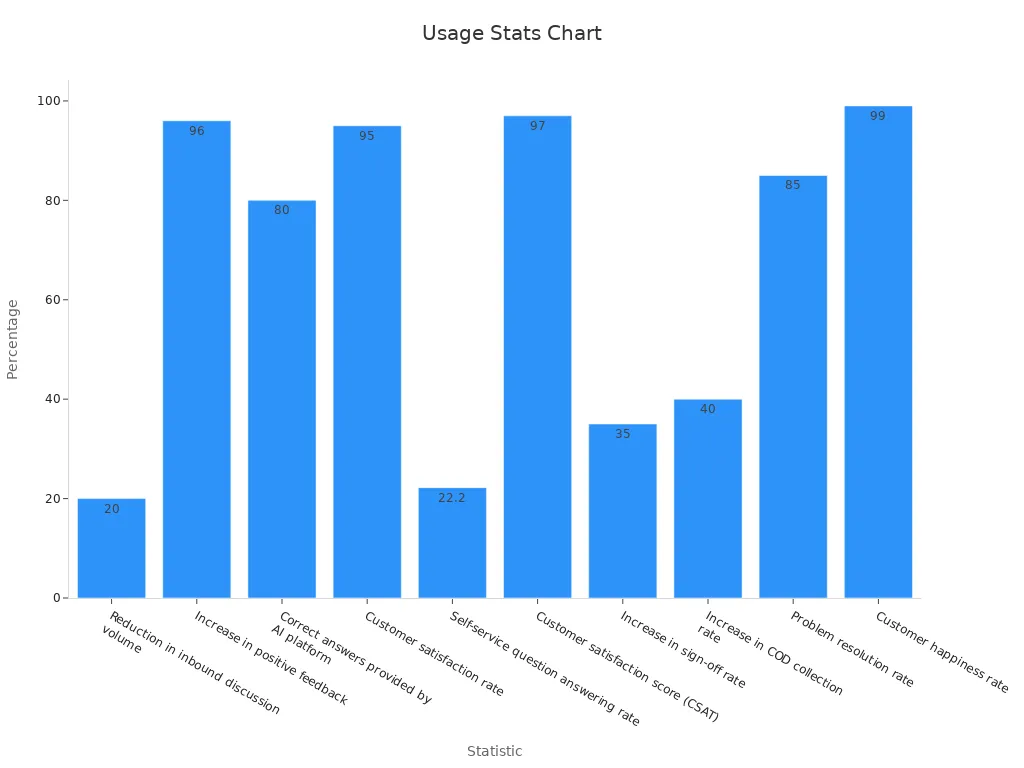

By leveraging Sobot Live Chat, you can respond to angry customers with empathy and precision, turning complaints into loyalty.
Offering Clear and Actionable Solutions
When customers are upset, they want solutions—not excuses. Offering clear and actionable steps is key to an effective resolution process. Start by analyzing the issue thoroughly. Tools like Sobot AI can help identify pain points by reviewing feedback and service interactions.
Once you understand the problem, communicate the solution in simple terms. For example, if a customer complains about a billing error, say, “We’ve corrected the mistake, and the updated invoice will be sent to your email within the next hour.” Avoid vague promises like, “We’ll look into it.”
Here’s how actionable solutions reduce dissatisfaction:
| Evidence | Description |
|----------|-------------|
| Clear Actionable Steps | Data analysis aims to turn raw data into clear, actionable steps for decision-makers, impacting business goals directly. |
| Identifying Churn Causes | Understanding the reasons behind customer churn helps businesses create strategies to reduce it, thus improving customer retention. |
| Communication of Insights | Effective communication ensures stakeholders grasp the data, which is crucial for taking necessary actions to enhance customer satisfaction. |
Additionally, implementing improvements based on feedback analysis leads to higher customer satisfaction. Sobot’s AI tools can automate this process, ensuring quick resolutions and happier customers.
By offering clear solutions, you not only resolve the immediate issue but also show customers that your brand values their time and concerns. This approach strengthens loyalty and reduces churn.
Following Up to Ensure Customer Satisfaction
Resolving a customer’s issue is only half the battle. Following up afterward ensures they feel valued and reassures them that their concerns were genuinely addressed. This step is crucial for building trust and loyalty, especially when handling angry customers.
Start by reaching out to confirm the resolution met their expectations. A simple message like, “We wanted to check if everything is now sorted out for you,” can go a long way. It shows you care about their experience beyond the initial interaction. Tools like Sobot Live Chat make this process seamless by keeping all customer data in one place, allowing you to personalize follow-ups based on their previous concerns.
Why Follow-Ups Matter
Following up isn’t just about being polite—it’s about ensuring customer satisfaction. When you follow up, you create an opportunity to measure how well your resolution worked. Metrics like Net Promoter Score (NPS), Customer Satisfaction Score (CSAT), and Customer Effort Score (CES) help you understand the impact of your service.
| Metric | Purpose |
|---|---|
| NPS | Measures customer loyalty and advocacy over time. |
| CSAT | Provides immediate feedback on specific transactions or interactions. |
| CES | Assesses how easy it is for customers to interact with the business. |
These metrics aren’t just numbers. They reveal whether your customers are likely to recommend your brand or return for future purchases. For example, a high NPS indicates strong loyalty, while a low CES highlights areas where your processes might be causing frustration.
How to Follow Up Effectively
Effective follow-ups require more than just sending a generic email. Here’s how you can make them impactful:
- Personalize Your Message: Reference the customer’s specific issue. For instance, “We noticed your order was delayed last week. Is everything now resolved?”
- Use Surveys: Tools like Sobot Live Chat allow you to send quick satisfaction surveys after interactions. These surveys provide immediate feedback and help you identify areas for improvement.
- Offer Additional Support: Let customers know you’re available for further assistance. A follow-up like, “If you have any other questions, feel free to reach out,” keeps the door open for communication.
The Benefits of Following Up
Following up isn’t just good for customers—it’s great for your business too. Customers who feel cared for are more likely to stick around. Studies show that satisfied customers are 88% more likely to repurchase and recommend your brand to others.
Imagine this scenario: A customer had a billing issue that was resolved quickly. You follow up with a personalized message and a short survey. They respond positively, and their feedback highlights how much they appreciated the quick resolution. This interaction not only strengthens their loyalty but also provides valuable insights for improving your processes.
Sobot’s AI tools make follow-ups even easier. With features like automated surveys and built-in analytics, you can track customer satisfaction effortlessly. These tools help you identify trends, reduce friction, and ensure every customer feels heard.
Turning Follow-Ups into Opportunities
Every follow-up is an opportunity to deepen your relationship with the customer. Use this chance to thank them for their patience and offer something extra, like a discount or exclusive access to a promotion. Small gestures like these can turn a previously angry customer into a loyal advocate for your brand.
By following up effectively, you show customers that their concerns matter. This approach not only resolves immediate issues but also builds lasting trust. When you handle angry customers with care and follow through, you create a foundation for long-term loyalty.
Advanced Techniques for 2025
Leveraging AI Tools like Sobot for Real-Time Support
AI tools have revolutionized how businesses handle customer support, and in 2025, they’re more essential than ever. Imagine being able to resolve customer issues instantly, even during peak hours. That’s exactly what AI-powered platforms like Sobot deliver. With features like AI chatbots and real-time assistance, you can handle high volumes of inquiries without compromising quality.
For example, Sobot’s AI tools can resolve up to 70% of Tier 1 inquiries, freeing your team to focus on more complex issues. This not only boosts agent productivity by 20-30% but also improves customer satisfaction by 60%. Customers appreciate quick, accurate responses, and AI ensures they get just that. Plus, tools like Sobot Live Chat unify all communication channels, so you never miss a message, whether it’s from WhatsApp, Instagram, or your website.
The numbers speak for themselves. Companies using AI tools report a 15% higher Net Promoter Score (NPS) and a 50% reduction in repeat calls. By integrating AI into your customer service strategy, you’re not just solving problems—you’re building trust and loyalty.
Training Teams for Hybrid and Omnichannel Interactions
In 2025, customer interactions happen everywhere—online, in-store, and across multiple platforms. To keep up, your team needs to excel in hybrid and omnichannel environments. This means training them to handle seamless transitions between channels while maintaining a consistent tone and quality of service.
Start by equipping your team with the right tools. Platforms like Sobot Live Chat provide a unified workspace, making it easier for agents to manage conversations across channels. But technology alone isn’t enough. Your team also needs soft skills like empathy and adaptability. For instance, an agent might start a conversation on social media and continue it via email. Training ensures they can navigate these shifts effortlessly.
Companies with strong omnichannel strategies retain 89% of their customers, compared to just 33% for those without. This highlights the importance of preparing your team for this new reality. Regular workshops, role-playing scenarios, and real-time feedback can help them master the art of hybrid interactions. When your team feels confident, your customers feel valued.
Using Predictive Analytics to Anticipate Customer Needs
Wouldn’t it be amazing to solve a customer’s problem before they even mention it? Predictive analytics makes this possible. By analyzing historical data and current trends, you can anticipate customer needs and offer proactive solutions.
For example, retail giants like H&M use predictive analytics to forecast fashion trends, allowing them to stock the right products at the right time. Similarly, Sobot AI leverages machine learning to identify patterns in customer behavior. This helps businesses optimize inventory, reduce cart abandonment, and improve overall customer satisfaction.
The market for predictive analytics is booming, with revenue expected to grow from $14.71 billion in 2023 to $67.66 billion by 2030. This growth reflects its value across industries. In customer support, predictive analytics can identify common pain points, enabling you to address them proactively. Imagine sending a personalized discount to a customer who’s about to abandon their cart. Small actions like these can make a big difference.
By adopting predictive analytics, you’re not just reacting to problems—you’re staying ahead of them. This proactive approach enhances the customer experience and strengthens your brand’s reputation.
Implementing Proactive Customer Service Strategies
Proactive customer service isn’t just a buzzword—it’s a game-changer. Instead of waiting for customers to come to you with problems, you anticipate their needs and address issues before they even arise. This approach not only reduces frustration but also builds trust and loyalty. Think about it: wouldn’t you prefer a brand that solves your problem before you even notice it?
Why Proactive Service Matters
Proactive strategies can transform how customers perceive your brand. Here’s why they’re so effective:
- They reduce customer service calls by 20-30% within a year.
- 96% of customers feel more loyal to a brand after receiving excellent service.
- Employees become more productive when they focus on preventing issues rather than just reacting to them.
Did you know that Elon Musk often responds to customer feedback directly on Twitter? Whether it’s praise or criticism, he engages proactively, showing customers that their voices matter.
When you take the initiative, you show customers that you care about their experience. This creates a positive impression and keeps them coming back.
How to Implement Proactive Strategies
So, how can you make proactive service a reality? Here are some actionable steps:
- Use Predictive Tools: Platforms like Sobot AI analyze customer behavior to predict potential issues. For example, if a customer frequently abandons their cart, Sobot can send a personalized reminder or offer a discount to encourage them to complete their purchase.
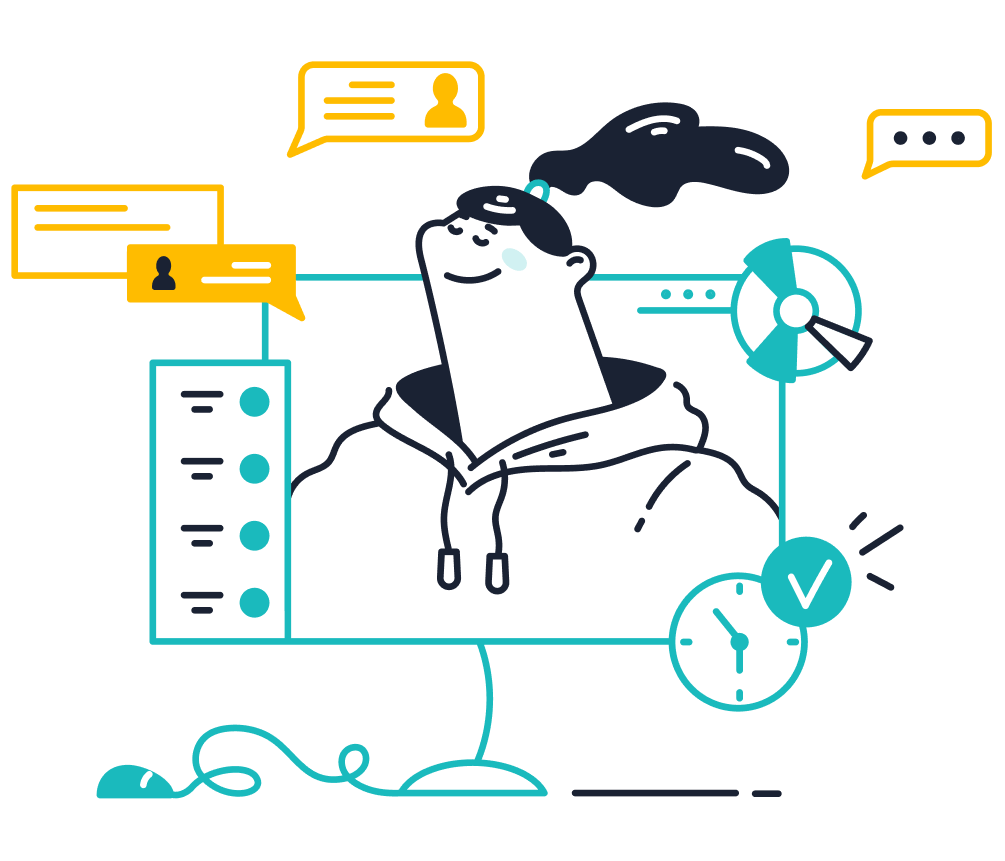
- Send Timely Updates: Keep customers informed about delays, outages, or changes. A simple message like, “Your order is on its way and will arrive tomorrow,” can prevent unnecessary frustration.
- Offer Self-Service Options: Many customers prefer solving problems on their own. Tools like Sobot Live Chat provide 24/7 support, allowing users to find answers quickly without waiting for an agent.
- Gather Feedback Regularly: Use surveys and follow-ups to understand customer pain points. This helps you identify trends and address them before they escalate.
The Role of Technology in Proactive Service
Technology plays a huge role in making proactive service possible. With tools like Sobot Live Chat, you can monitor customer interactions across multiple channels, from WhatsApp to Instagram. This omnichannel approach ensures you never miss an opportunity to engage.
Here’s what makes Sobot stand out:
| Feature | Benefit |
|---|---|
| Predictive Analytics | Anticipates customer needs. |
| AI-Powered Chatbots | Resolves common issues instantly. |
| Unified Workspace | Keeps all conversations organized. |
| Real-Time Notifications | Alerts customers about updates. |
By leveraging these features, you can stay one step ahead of your customers’ expectations.
Real-Life Example
Imagine this: A customer orders a product, but there’s a delay in shipping. Instead of waiting for them to complain, you send a message through Sobot Live Chat explaining the delay and offering a discount for the inconvenience. This small gesture turns a potentially negative experience into a positive one.
Proactive service isn’t just about solving problems—it’s about creating memorable experiences. When you show customers that you value their time and concerns, you build a foundation for long-term loyalty.
Final Thoughts
In 2025, customer expectations are higher than ever. Proactive service helps you meet those expectations while reducing stress for both your team and your customers. Tools like Sobot AI and Sobot Live Chat make it easier than ever to anticipate needs, resolve issues, and create lasting relationships.
So, why wait for problems to arise? Start implementing proactive strategies today and watch your customer satisfaction soar.
Real-Life Scenarios and Scripts to Handle Angry Customers

Managing Frustrated Customers on Social Media
Social media can feel like a minefield when dealing with frustrated customers. Angry posts can spread quickly, damaging your brand’s reputation. But you can turn these situations around with the right approach. Respond quickly to show you care. A delayed reply can make the customer feel ignored, which only fuels their frustration.
Keep your tone friendly and professional. For example, if a customer tweets about a delayed order, reply with something like, “We’re sorry for the delay. Let’s fix this for you right away.” Personalize your apology to match their issue. Avoid generic responses like, “We’re sorry for the inconvenience.”
Move the conversation to private channels for detailed resolutions. This protects their privacy and allows you to focus on solving the problem. Tools like Sobot Live Chat can help by integrating social media messages into one workspace. You’ll never miss a comment or DM, and you can respond faster.
Tip: Regularly review social media feedback to spot patterns. If multiple customers complain about shipping delays, it’s time to revisit your logistics process.
Resolving Complaints in E-commerce Settings
E-commerce complaints often revolve around issues like delayed deliveries, incorrect orders, or payment problems. These situations can frustrate even the most loyal customers. To handle them effectively, focus on clear communication and actionable solutions.
Start by acknowledging the issue. For example, if a customer complains about receiving the wrong item, say, “We understand how disappointing this must be. Let’s get the correct item to you right away.” Avoid making them repeat their complaint multiple times. This adds to their frustration.
Use tools like Sobot AI to streamline the resolution process. Its predictive analytics can identify common pain points, helping you address issues proactively. For instance, if a customer’s payment fails, Sobot can send an automated message explaining the problem and offering a solution.
Note: Research shows that brands with simple complaint processes retain more customers. Complicated systems can drive them away, reducing loyalty and brand equity.
Example Scripts for Common Customer Complaints
Scripts can help your team handle difficult customers with confidence. Here are examples for common scenarios:
| Scenario | Script |
|---|---|
| Delayed Delivery | “We’re sorry your order is late. We’ve expedited shipping and it should arrive tomorrow.” |
| Incorrect Item Received | “We apologize for the mix-up. We’ll send the correct item today and arrange a return.” |
| Billing Error | “We’ve fixed the billing issue. The updated invoice is on its way to your email.” |
| Technical Issue | “We understand the frustration. Let’s troubleshoot this together to get it resolved.” |
These scripts improve First Call Resolution (FCR) rates, ensuring customers don’t need to call back. They also enhance Customer Satisfaction (CSAT) by showing empathy and offering clear solutions. Tools like Sobot Live Chat can assist by providing AI-powered suggestions for responses, making interactions smoother and more efficient.
Pro Tip: Train your team to adapt scripts based on the customer’s tone and urgency. Flexibility makes the interaction feel more personal.
How Sobot Live Chat Enhances Customer Interactions
When it comes to customer interactions, Sobot Live Chat takes things to the next level. It’s not just a tool—it’s your secret weapon for creating seamless, personalized experiences. Whether you’re dealing with a frustrated customer or answering a simple query, Sobot Live Chat ensures every interaction feels effortless.
Here’s how it works its magic:
- Smarter Chatbots: Sobot Live Chat uses machine learning to improve chatbot performance over time. This means your customers get better answers, faster.
- Powerful Analytics: The platform includes a robust dashboard that tracks key metrics like response time and resolution rates. You’ll know exactly where to improve.
- Unified Workspace: All customer conversations stay in one place, whether they come from WhatsApp, Instagram, or your website. No more juggling multiple platforms.
The results speak for themselves. Samsung, for example, saw a 30% boost in agent efficiency after integrating Sobot Live Chat. Their Customer Satisfaction Score (CSAT) also hit an impressive 97%. These numbers aren’t just stats—they’re proof of how Sobot Live Chat transforms customer service.
Tip: Use the analytics dashboard to identify trends in customer behavior. It’s a game-changer for spotting issues before they escalate.
Sobot Live Chat doesn’t just help you respond—it helps you connect. By personalizing every interaction and keeping things organized, it turns one-time customers into loyal advocates. Ready to enhance your customer interactions? Sobot Live Chat is here to help.
For more details, check out Sobot Live Chat.
Mastering how to handle irate customers in 2025 isn’t just about resolving complaints—it’s about creating opportunities for growth. By practicing empathy, personalizing interactions, and leveraging advanced tools like Sobot Live Chat, you can turn even the most challenging situations into moments of connection. These strategies don’t just improve customer satisfaction; they also drive measurable business success.
Consider this:
| Evidence Type | Statistic/Fact |
|---|---|
| Revenue Growth | Companies leveraging customer data can see a 15% revenue increase. |
| Sales Growth | Businesses using customer insights outperform competitors by 85% in sales growth. |
| Profit Increase | Boosting retention by just 5% can increase profits by up to 95%. |
When you combine empathy with technology, you create a seamless experience that keeps customers coming back. Sobot Live Chat helps you achieve this by offering real-time support, predictive analytics, and personalized solutions. With these tools, you’re not just solving problems—you’re building loyalty that lasts.
FAQ
What makes Sobot Live Chat different from other tools?
Sobot Live Chat stands out with its omnichannel support, AI-powered tools, and unified workspace. It integrates seamlessly with platforms like WhatsApp, Instagram, and websites. Businesses using it report a 38% increase in conversions and a 95% customer satisfaction rate. Learn more.
How does Sobot Live Chat help reduce customer frustration?
It ensures quick responses by unifying all customer interactions in one place. Its AI tools provide accurate, personalized answers instantly. For example, Samsung improved agent efficiency by 30% and achieved a 97% CSAT score after adopting Sobot Live Chat.
Can Sobot Live Chat handle high volumes of inquiries?
Yes! Sobot’s AI chatbots resolve up to 70% of Tier 1 inquiries, freeing agents for complex tasks. This reduces wait times and boosts satisfaction. During peak shopping seasons, OPPO used Sobot to achieve an 83% chatbot resolution rate.
Is Sobot Live Chat suitable for small businesses?
Absolutely! Sobot Live Chat offers scalable solutions for businesses of all sizes. Its free trial lets you explore features like AI-assisted tools, built-in analytics, and omnichannel support. Small businesses can improve efficiency and customer loyalty without breaking the bank.
How can I try Sobot Live Chat?
You can start with a free trial by visiting Sobot Live Chat. Test its features like AI-powered responses, omnichannel support, and analytics to see how it transforms your customer service.
See Also
Enhance Customer Satisfaction With These 10 Live Chat Tips
10 Essential Steps For Successful Omnichannel Contact Centers
Best Practices For Effective Quality Management In Call Centers
Improve SaaS Support Through Effective Live Chat Techniques
Effective Strategies For Managing Live Chat Agents Successfully